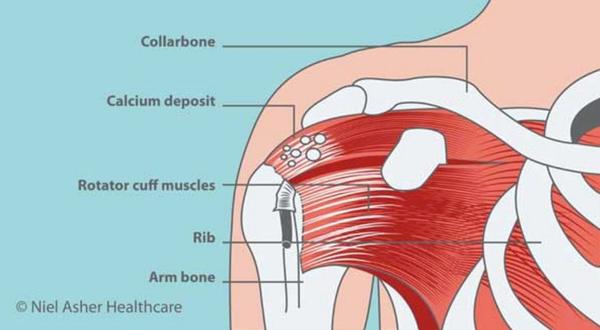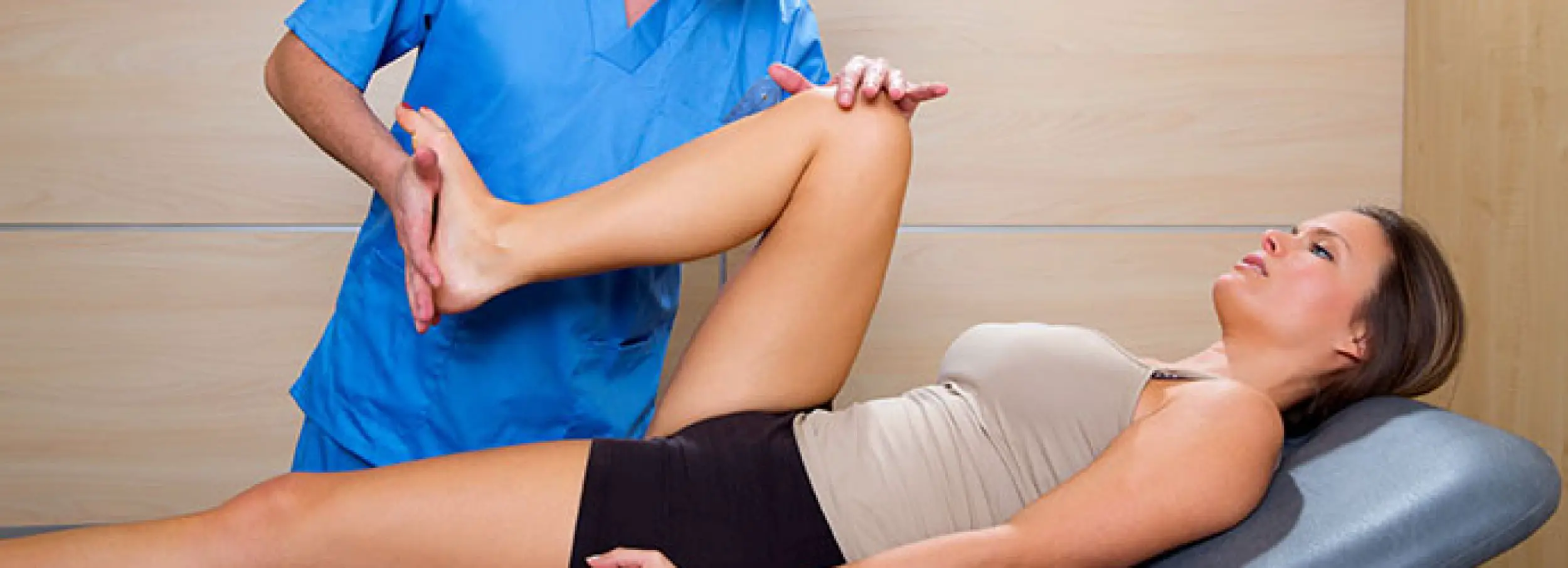
The development of a Calcific tendinopathy especially in the shoulder can be attributed to a calcium deposit which forms in the tendons of the rotator cuff. The pain of this is often difficult to distinguish from a torn rotator cuff or rotator cuff tendonitis.
There are 3 main phases of the development of this calcium deposit leading to Calcific Tendinopathy.
Stage 1
This is known as the pre-calcific stage where the tendon fibres thin and the tissue turns to fibrocartilage. The reason for this is often over -use.
Stage 2
During this stage, crystals of calcium are deposited within the tendon due to the inflammatory response and make the tendon take on a chalk-like appearance. These calcium crystals would normally be reabsorbed into the blood.
Stage 3
The final stage of development occurs when scar tissue develops as a response to the calcium deposits
What are the Signs and Symptoms of Calcific Tendinopathy?
Excrutiating pain radiating up the neck and down the arm are the first signs of the acute problem and all shoulder movements cause more pain. As the pain becomes more chronic, then there is more pain at night than during the day and it is difficult to pin-point the exact position.
It is most commonly found in those diagnosed with diabetes. It can last for a period of 1 to 4 weeks.
Treatment For Calcific Tendinopathy
Hot and cold compresses are initally recommended to alleviate possible swelling and inflammation. Traditionally, surgery has been usually advised when symptoms become increasingly severe and the ability to perform normal activities becomes limited. Now, the use of ESWt or Shock Wave Therapy can remove the calcium deposit to enable the body to heal itself and this can be performed as an outpatient.
Image thanks to www.nielasher.com

Great web site. Plenty of useful info here. I’m sending it to a friend of mine who is in pain too. Thank you